Kabocha no Nimono is one of the most classic Japanese dishes, featuring kabocha squash. Japanese seasonings enhance the natural sweetness of kabocha, creating a flavorful dish with a soft and tender texture.
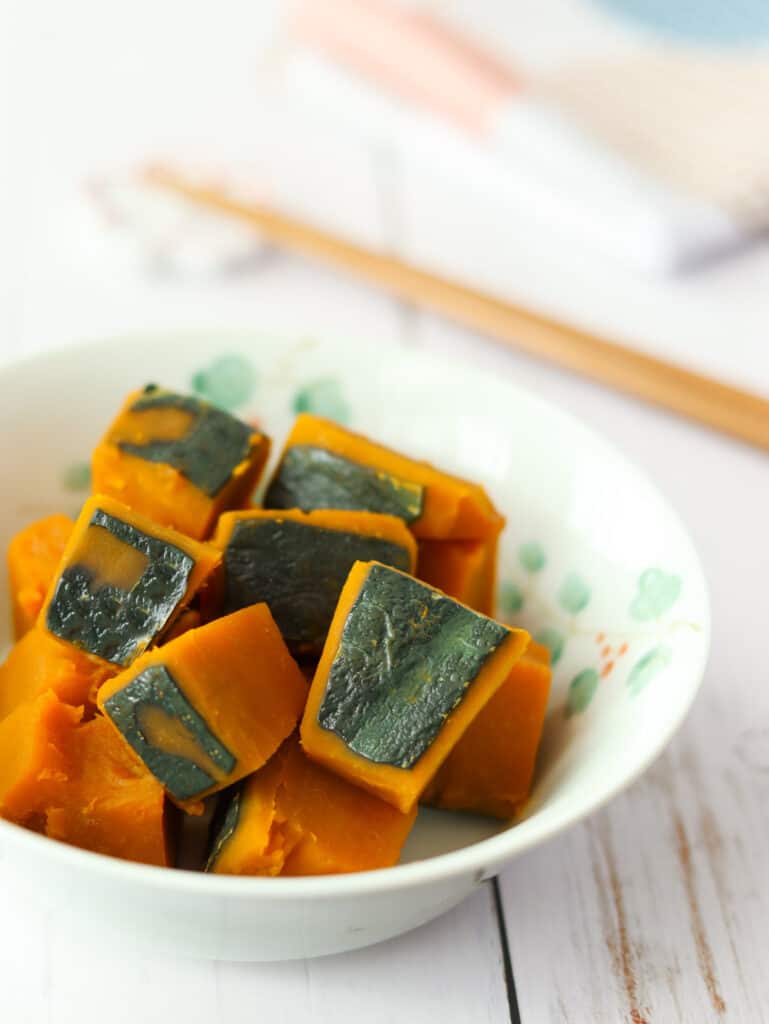
Jump to:
What is Kabocha no Nimono?
Kabocha no Nimono is a dish made by simmering kabocha in water or dashi stock with traditional Japanese seasonings, such as mirin and soy sauce. "Kabocha" refers to kabocha squash, "no" indicates possession (connecting the preceding and following words), and "Nimono" means Japanese simmered dishes. Due to its soft and tender texture when simmered, kabocha is considered an ideal ingredient for nimono dishes.
Adding a small amount of Japanese seasonings enhances the flavor of kabocha as it simmers. While it is delicious when freshly prepared, allowing it to cool enables the flavors to penetrate further, making it a delightful dish as well.
Exploring kabocha
Kabocha squash is known for its rich sweetness, vibrant orange flesh, and tendency to fall apart easily when cooked. It is rich in nutrients like beta-carotene, vitamin C, vitamin E, and potassium, making it a highly nutritious vegetable.
In Japan, it is commonly enjoyed in nimono dishes, stir-fries, and tempura. Due to its pronounced sweetness, it is also often used in desserts such as puddings and cakes.
Whether to simmer in water or dashi
Kabocha no nimono is a staple dish in Japan, so there are many different recipes. These recipes can be broadly divided into two categories: those that use water and those that use dashi stock to simmer kabocha squash. Using water allows you to better appreciate the natural flavor of kabocha, while using dashi provides a more traditional Japanese taste.
In the recipe on this page, I use water because I prefer to highlight the natural flavor of the ingredients. However, if you would like to experiment with a slightly different flavor, you can try using dashi instead. Even when using dashi, there is no need to adjust the amounts of the other ingredients.
Simple guide to otoshi-buta (drop lid)
In Japan, when making this dish—or really, nimono dishes in general—it is common to use an otoshi-buta (drop lid).
An otoshi-buta is a lid that sits directly on top of the ingredients in a pot or pan. Placing the lid directly on the ingredients allows the cooking liquid underneath to circulate more evenly, resulting in more efficient simmering with less liquid.

Commercial versions are available, but you can easily make one yourself by simply poking a large hole or several small ones in a sheet of aluminum foil—as shown in the photo above. The holes help prevent the otoshi-buta from floating up due to steam pressure. You can use a regular lid instead, but since it is so easy to make, I recommend giving it a try.
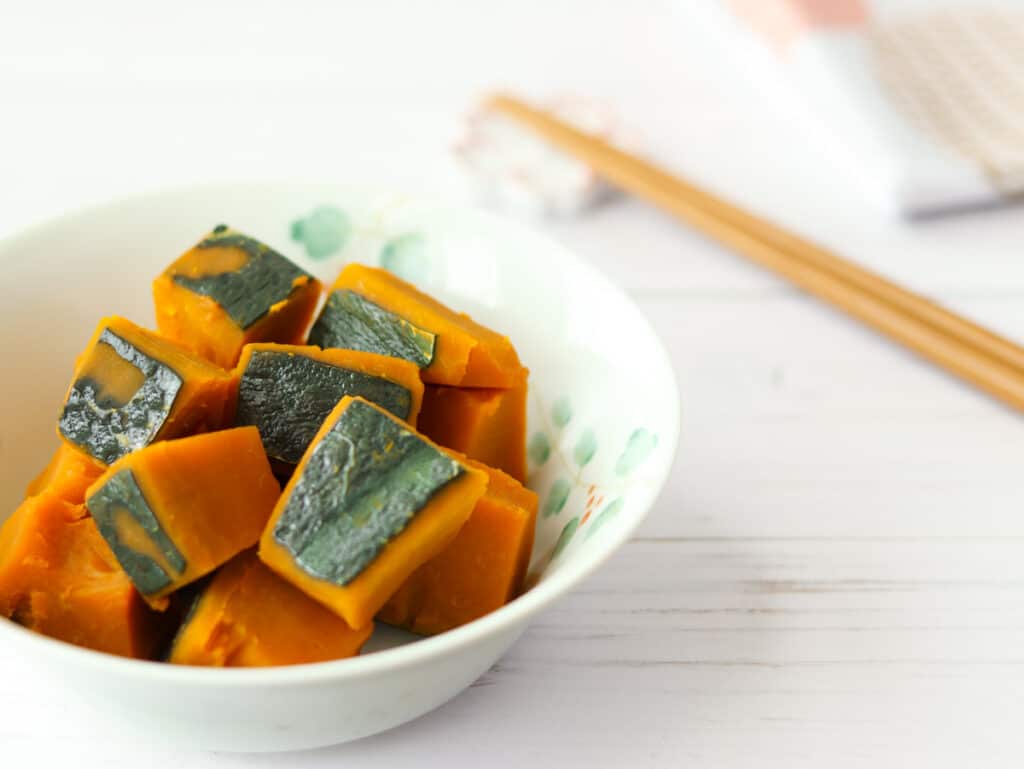
📋Step-by-step recipe
Equipment
- otoshi-buta (drop-lid) (You can easily make one by following the instructions above. If that seems like too much trouble, you can simply use a regular lid instead.)
Ingredients
- 0.7 lb kabocha squash
- ⅔ cup water
Seasonings:
- ½ Tbsp mirin
- 1 tsp sugar
- ½ Tbsp light soy sauce (You can substitute it with regular soy sauce; the main difference is the color.)
Instructions
🕒 Total: 25 mins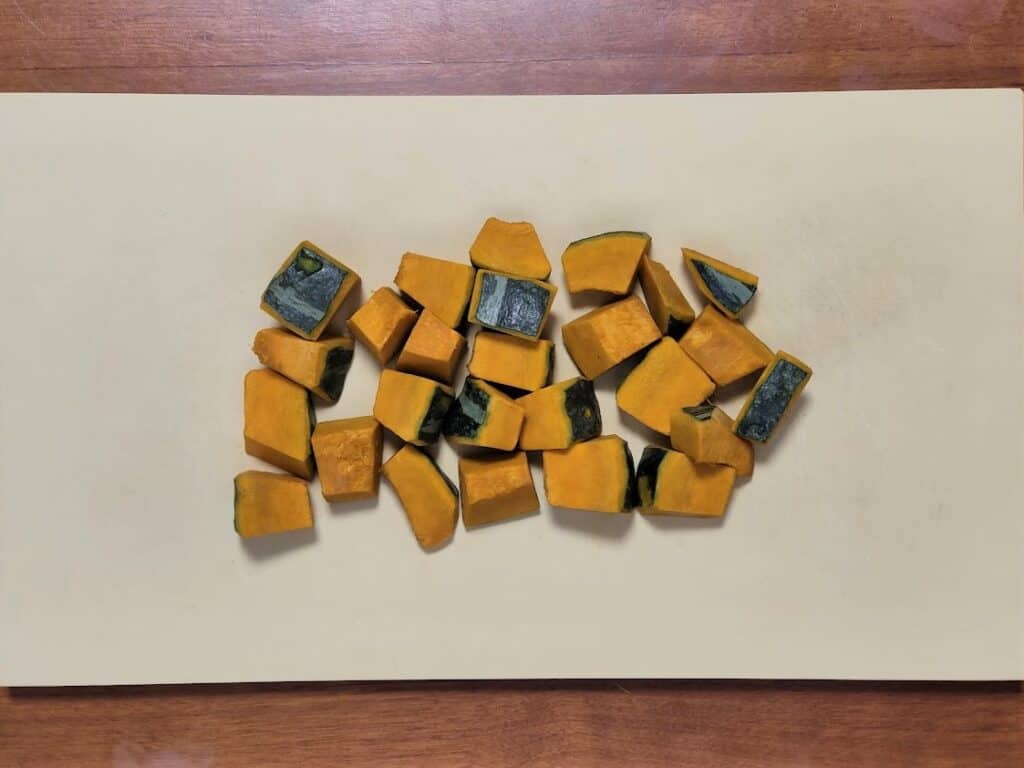
Step 1
Scoop out the seeds and membrane from kabocha and cut it into 1-inch (2.5 cm) cubes. If there are any tough parts on the skin, cut them off. Trim all edges of the cut kabocha skin (optional).
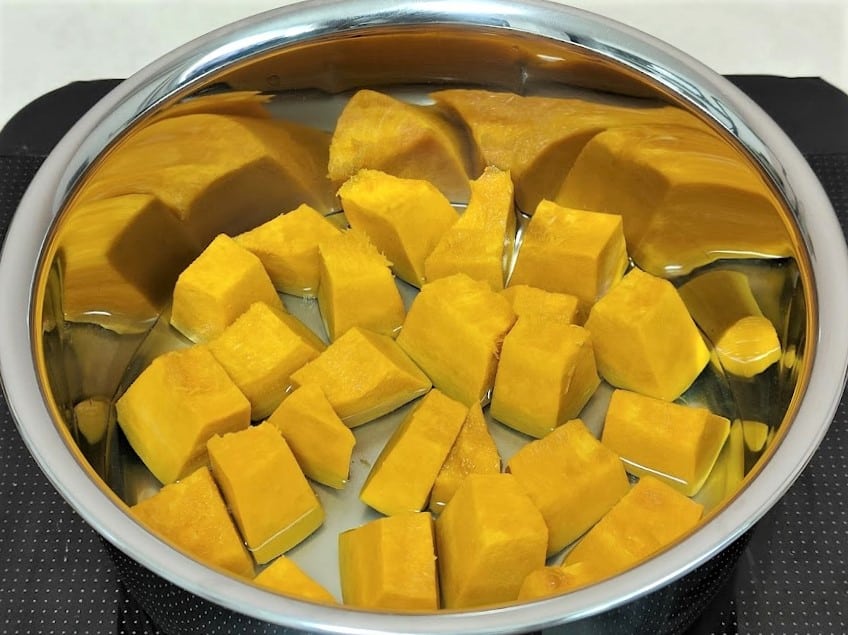
Step 2
Place the kabocha pieces in a pot, skin side down, ensuring as little overlap as possible. Add water and bring it to a boil.
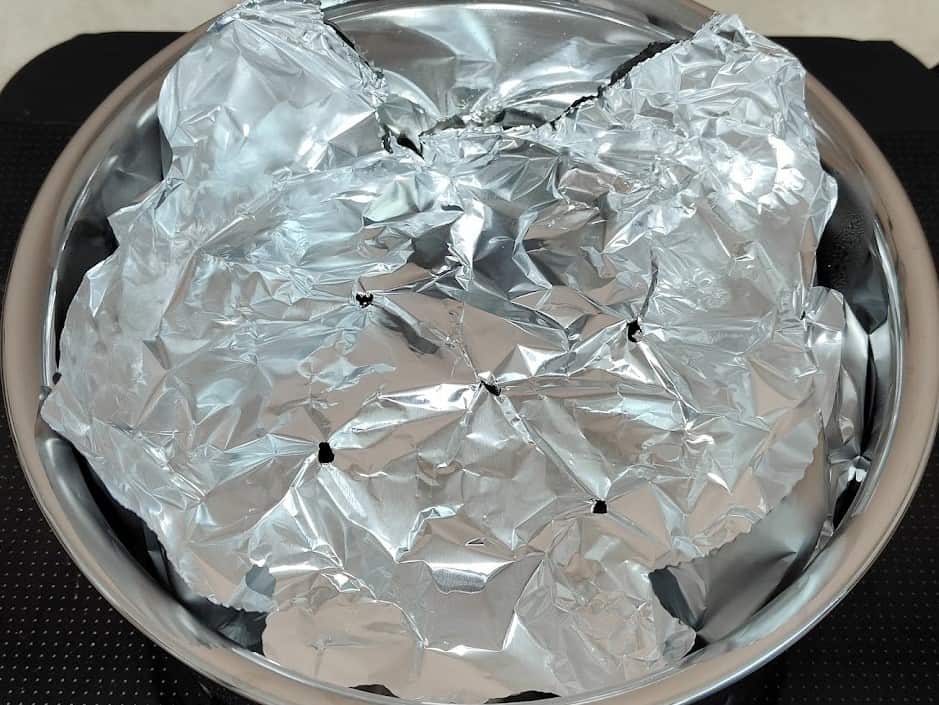
Step 3
Once boiling, add seasonings (mirin, sugar, and light soy sauce), and cover with an otoshi-buta. Let it simmer over low heat for 15-20 minutes.
To store
You can store it in the refrigerator for up to 3 days.
Tips on how to make
- Cut the kabocha squash into bite-sized pieces. If the pieces are too large, they might not cook through properly.
- After cutting the kabocha, trim off all the skin edges. This will prevent it from falling apart during cooking and improve its appearance. However, this is an optional process that doesn't affect the taste.
- Don't stir the kabocha pieces while simmering. Avoid moving them to help maintain their shape.
If you try this recipe, I’d love to hear what you think. Please consider leaving a review and star rating in the comments below. If you enjoyed it, I’d really appreciate it if you shared it with your friends.
Recipe card
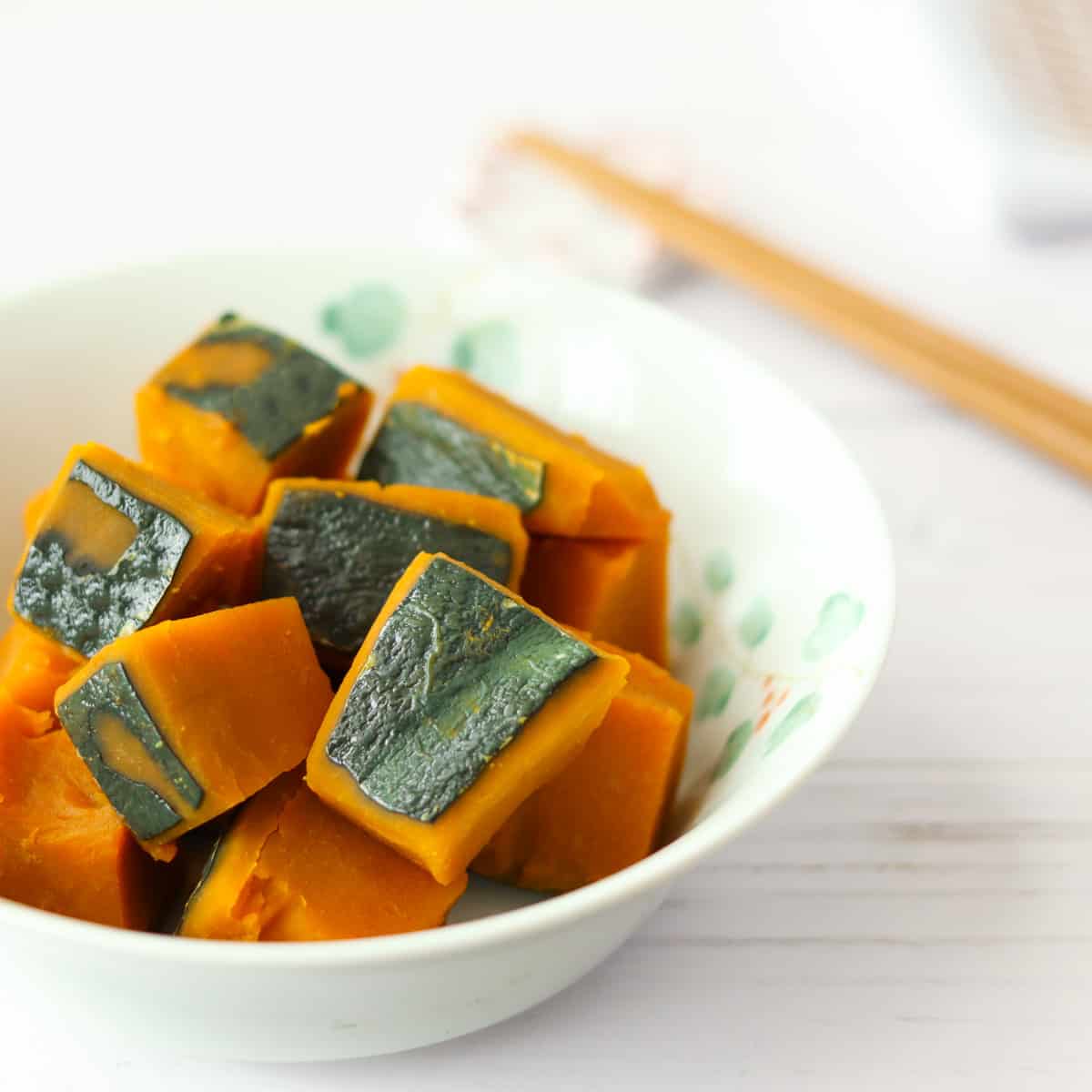
Kabocha no Nimono (Simmered Squash)
Equipment
- otoshi-buta (drop-lid) (You can easily make one by following the instructions above. If that seems like too much trouble, you can simply use a regular lid instead.)
Ingredients
- 0.7 lb kabocha squash
- ⅔ cup water
Seasonings:
- ½ Tbsp mirin
- 1 tsp sugar
- ½ Tbsp light soy sauce (You can substitute it with regular soy sauce; the main difference is the color.)
Instructions
- Scoop out the seeds and membrane from kabocha and cut it into 1-inch (2.5 cm) cubes. If there are any tough parts on the skin, cut them off. Trim all edges of the cut kabocha skin (optional).
- Place the kabocha pieces in a pot, skin side down, ensuring as little overlap as possible. Add water and bring it to a boil.
- Once boiling, add seasonings (mirin, sugar, and light soy sauce), and cover with an otoshi-buta. Let it simmer over low heat for 15-20 minutes.
Notes
- You can store it in the refrigerator for up to 3 days.

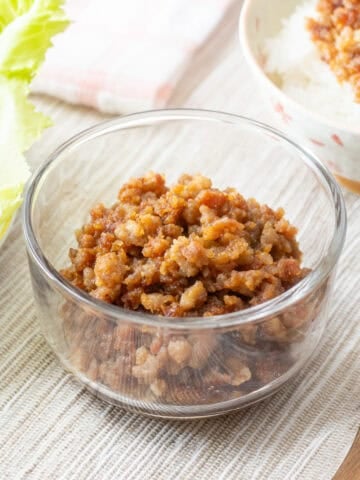
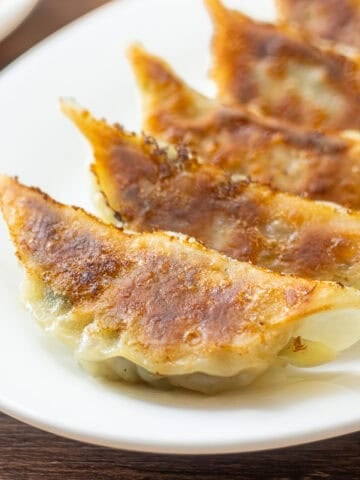
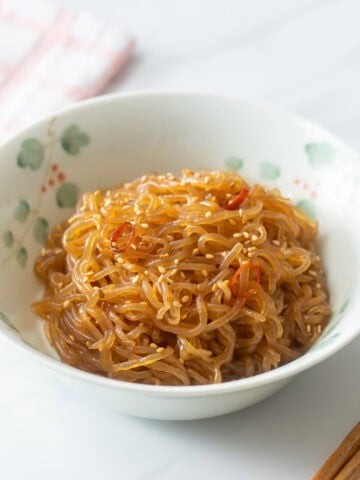
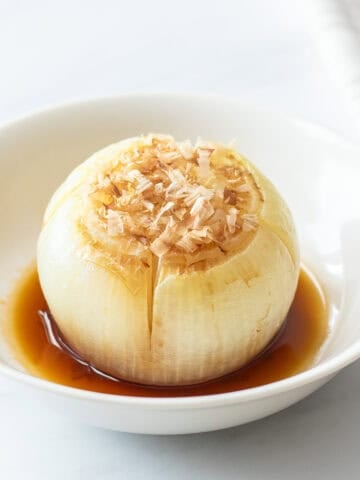
Leave a Rating and a Comment